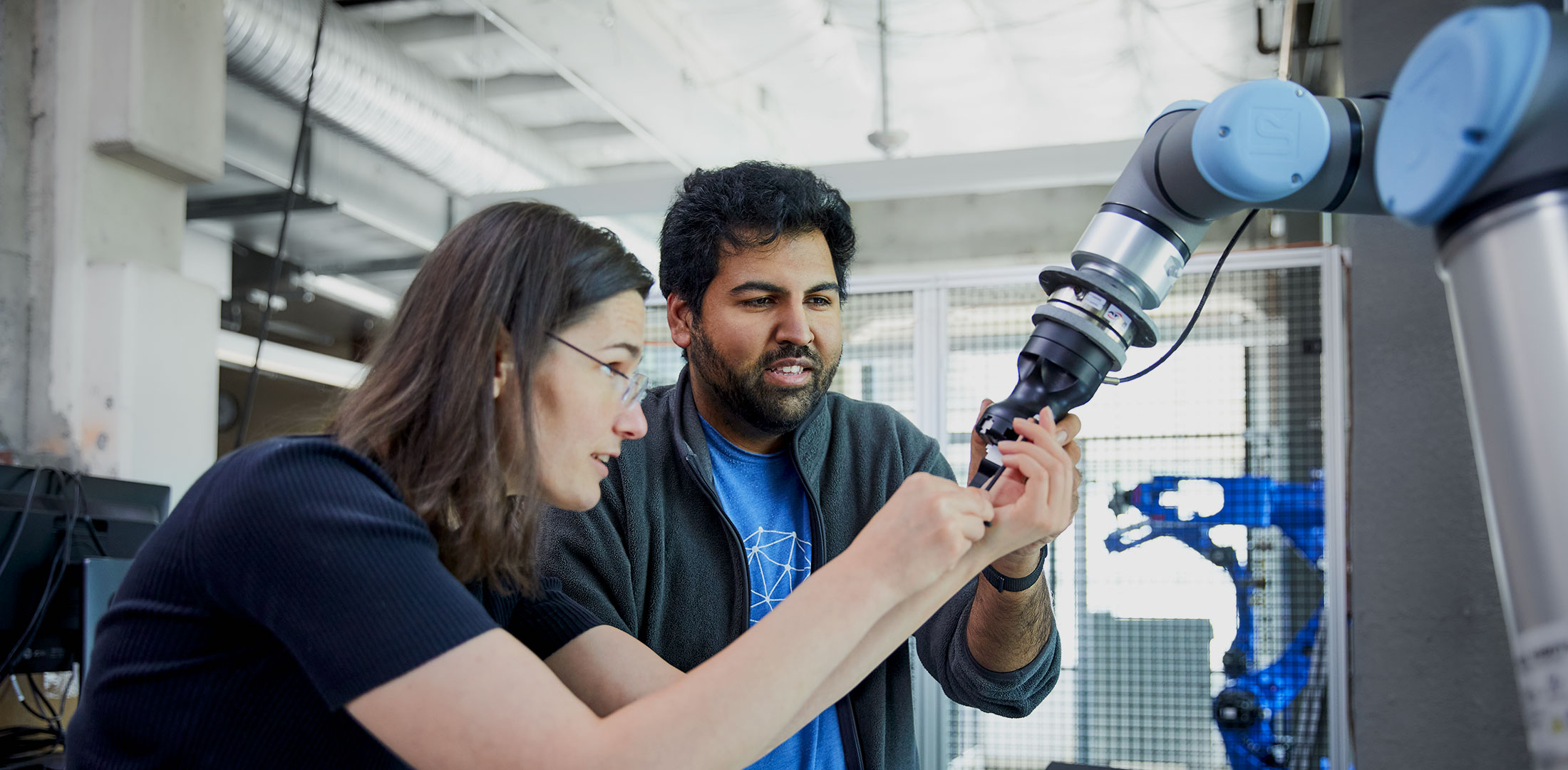It’s been more than two decades since Moonfruit launched as the first SaaS website builder. It was a good run for a service launched at the height of the dot-com boom, finally winding down quietly late last year.
Halfway through its life, Moonfruit was acquired by U.K. yellow pages publisher, Yell Group. Cofounder Wendy Tan White stayed on board as CEO, eventually leaving the firm in 2015. After taking on several board advisory positions, she joined Alphabet’s moonshot group, X, as vice president.
Tan White is quick to draw connections between her current project under the Alphabet banner and the one that defined her early career. “There’s a parallel I’m seeing now in the robotics space,” she tells TechCrunch. “People need much quicker ways to get applications spun up and deployed fast, but also more reusable.”
Almost exactly a year ago to date, she was finally ready to show the world the fruits of her team’s work. Intrinsic officially came out of stealth July 23, 2021, with a blog post penned by Tan White, noting,
Over the last few years, our team has been exploring how to give industrial robots the ability to sense, learn, and automatically make adjustments as they’re completing tasks, so they work in a wider range of settings and applications. Working in collaboration with teams across Alphabet, and with our partners in real-world manufacturing settings, we’ve been testing software that uses techniques like automated perception, deep learning, reinforcement learning, motion planning, simulation, and force control.

Image Credits: Intrinsic
The question at the heart of Intrinsic is a simple one: With interest in automation at an all-time high, is it possible to make industrial robotics more user-friendly? “We’re really about trying to unlock the economic potential of industrial robotics and give a lot more businesses and developers real access to it,” the executive tells TechCrunch. “Not just AI specialists or robotics PhDs. Give access to more folk who can really build applications more quickly with it.”
Intrinsic’s stated goal is “democratizing access to robotics,” effectively by making programming them as relatively simple as coding in Python. As with virtually every task in the robotics space, it’s far easier said than done. Among the myriad issues is the company’s platform agnosticism. Intrinsic doesn’t develop its own hardware, nor is it looking to play favorites. Rather, the company is working to develop a software later that can interface with a larger — and growing — number of industrial robots designed for automotive and electronics manufacturing, as well as logistics.
“IT’s an ecosystem-level platform, so we’ll be providing a system for other companies to add their hardware and software skills around it,” says Tan White. The offering, set to launch late next year, will allow developers to create applications, add skills and prove that all out in real time using a built-in simulator. All of that is designed to be executed by people with coding skills who aren’t roboticists.
In April, the company announced that it would be acquiring fellow robotic software developer Vicarious for an undisclosed sum. The firm, which raised around $122 million over its 11-year existence, focused on creating general intelligence for automated systems. Tan White says she saw kindred spirits in the Bay Area–based team.
In particular, the company was interested in Vicarious’s deployment. The startup brings a RaaS (robotics as a service) approach, coupled with its work on key manufacturing tasks like kitting and palletizing. Today the companies announced their full integration. The news finds Vicarious CEO Scott Phoenix taking up the joint roles of chief product and revenue officers, while former Akasha Imaging CEO Kartik Venkataraman is coming on board as head of Engineering Applications.

Image Credits: Image Credits: Gramazio Kohler Research, ETH Zurich
“Humanity is entering a golden age for intelligent robotics,” Phoenix says in a post tied to today’s news. “Combining efforts represents a huge leap forward for our shared mission.”
The process of combining the two companies hasn’t always been an easy one, according to Tan White, who notes that she had been through an acquisition in a past life and been involved in two additional acquisitions. Given that Vicarious and Intrinsic have a fair bit of overlap, the companies have had to work through some application redundancies, along with the standard cultural issues that come with any acquisitions.
Ultimately, the Vicarious name will go away, as its offerings are incorporated into the Intrinsic ecosystem and its employees join the Intrinsic ranks.
“One of the reasons we got together was the people,” Tan White explains. “We genuinely have a common mission, overall. We all want to democratize robotics. We all believe it’s critical to humanity to have access to this kind of automation and it will change how the world makes and produces.”

